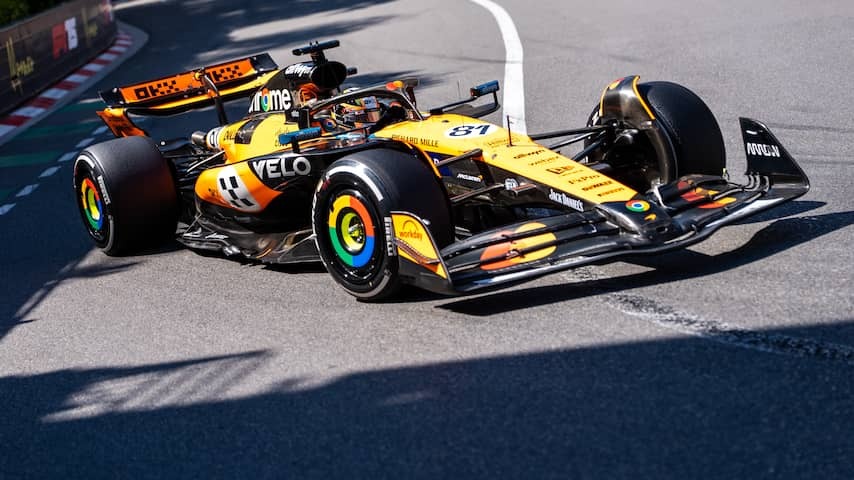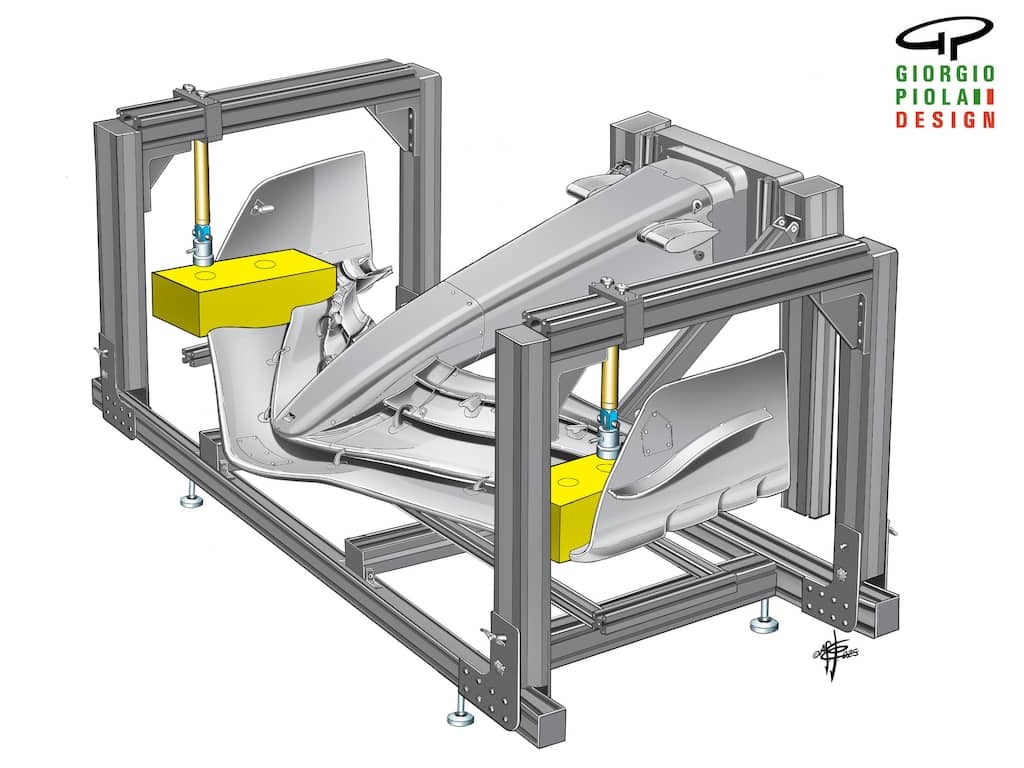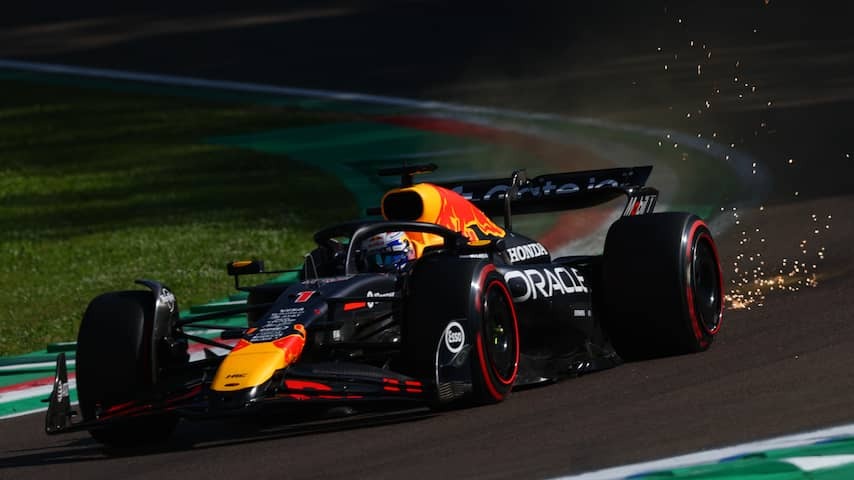
Although the effect is still unclear, Formula 1 has been eagerly awaiting rules for the bending of the front wing for some time. These rules will take effect this weekend in Spain. The most important facts about this intervention at a glance.
‘Race 9’ has been circled in red in the team agendas since the winter tests in Bahrain. Then it must be over with the bending front wings.
The regulations state that an aerodynamic component must not move, but every television viewer sees how the wings do bend at speed. For the sake of clarity: they will continue to do so. But if it is up to the FIA, a lot less.
It works like this: the wings are desperately needed in the corners. They generate downforce. The wings are shaped in such a way that a pressure difference between the airflow above and below creates a downward force. That’s called ‘downforce’. This force presses the tires of the car harder on the asphalt. This gives more grip, allowing the driver to go through the corners faster.
On the straight sections, the wings are in the way. Downforce is not necessary then. But they do create air resistance, because the wind hits them. Because a circuit consists of straight sections and corners, the teams look for a compromise between enough downforce and air resistance.
If a team succeeds in allowing the wings to bend a little at high speed, they will provide less air resistance. The result is a higher top speed, without sacrificing downforce. A more favorable compromise. There is only one problem: it is actually not allowed.
The regulation describes it as follows:
“All aerodynamic components and bodywork that affect the aerodynamic performance of the car must be rigidly secured and immobile.”
The FIA tests this on the circuits by applying vertical force to the wings on a stationary car or on a separate wing (with weight). Then they are allowed to bend a fixed distance.

Yet the wings bend: how is that possible?
Although the rules state that a wing must not move, Formula 1 teams have been experimenting for decades with ways to make them bend anyway. The designers manage to pass the inspection while the wings still bend at full speed. Especially with the modern carbon fiber wings, the technicians keep managing to do that. So the tests are getting stricter and stricter.
Although Red Bull was long a leader in this area, attention is now mainly focused on McLaren. Teams that are at the forefront in this ‘aero-elasticity’ pretend to be innocent, while the competition screams murder. That phenomenon is as old as Formula 1 itself. “Especially when the title fight becomes more intense, the teams will be much more concerned with each other’s cars,” says Nikolas Tombazis of the FIA.
With the current generation of cars, bending of the front wing in particular is even more important. “Already in 2024 it became clear that some teams were not only looking for less air resistance at high speed, but that they could also influence the balance of the car between high-speed and low-speed corners,” writes the FIA.
In short: by figuring out exactly how much a wing bends at what speed, that can be better adjusted to how much downforce the car needs in certain corners. In a slow corner you as a driver want as much downforce as possible at the front, so no bending wing. In a fast corner less downforce is needed at the front, so it is better if the wing bends a little.

Why is the FIA only intervening now?
Earlier, the FIA already tightened the test for the rear wings. Now it is the turn of the front wings. It is unusual to do that in the course of a season, but according to Tombazis there was no other way.
“We came to the conclusion late last season that stricter tests were needed, after we had analyzed camera images, among other things,” says the engineer. “But if we had let that take effect directly at the start of the season, it would have been too late for the teams. Wings they had already made for 2025 could have been thrown away. That costs a lot of money.”
5 millimeters less leeway
The tightening is as follows. In the old situation, with 100 kilograms of symmetrical load on both sides of the wing, it could not bend more than 15 millimeters vertically. That will be a maximum of 10 millimeters.
If there is only 100 kilograms of load on one side, the wing could bend 20 millimeters. That will be a maximum of 15 millimeters.
Then there are the ‘flaps’, the upright flaps where the actual bending is most visible. These may not bend more than 3 millimeters with 6 kilograms of load on the top edge. That was 5 millimeters.

FIA hopes it will be over now
According to the FIA, it concerns a “significant increase in rigidity”. Tombazis hopes that the hassle surrounding bending wings will be over by the end of the season.
“Unless, of course, we see that too much use is being made of it again. But we will continue to monitor the teams and ask them to come along with parts for inspections.”
According to the Greek engineer, the FIA also often tests between Saturday and Sunday. Then the cars are in ‘parc fermé’ and the teams are not allowed to touch them anymore. “Then they can no longer change anything on the car towards the race. And we prevent an extra stiff wing from being on the car during the inspection earlier in the weekend, which they then exchange.”
The effect of this intervention will become clear in the coming races. Max Verstappen said last weekend that he did not expect much from it. McLaren also claims that the rules will have little to no effect, while Ferrari hopes to benefit.
Most teams had to develop a new front wing. So the chance that there will be no effect at all is minimal.